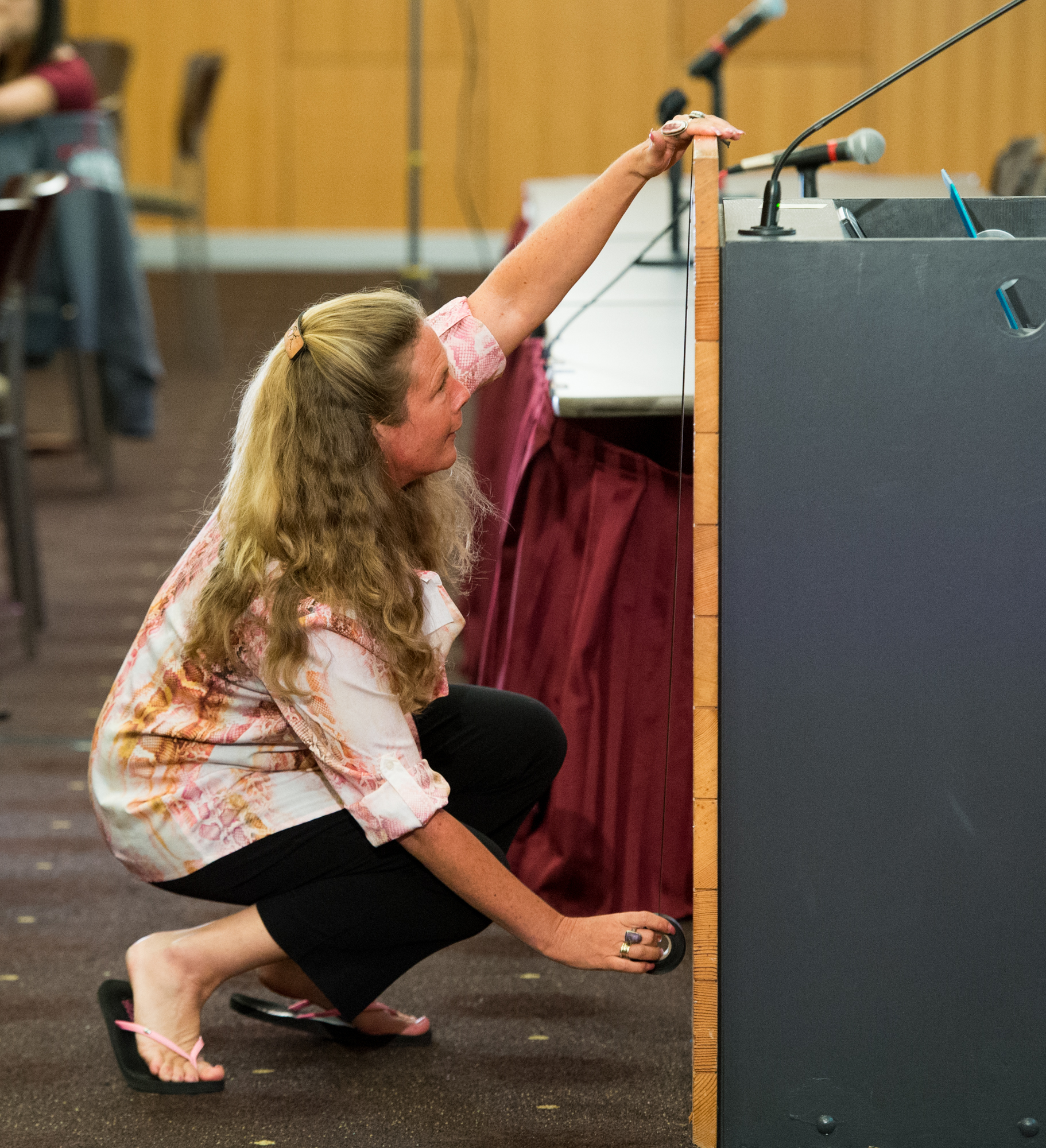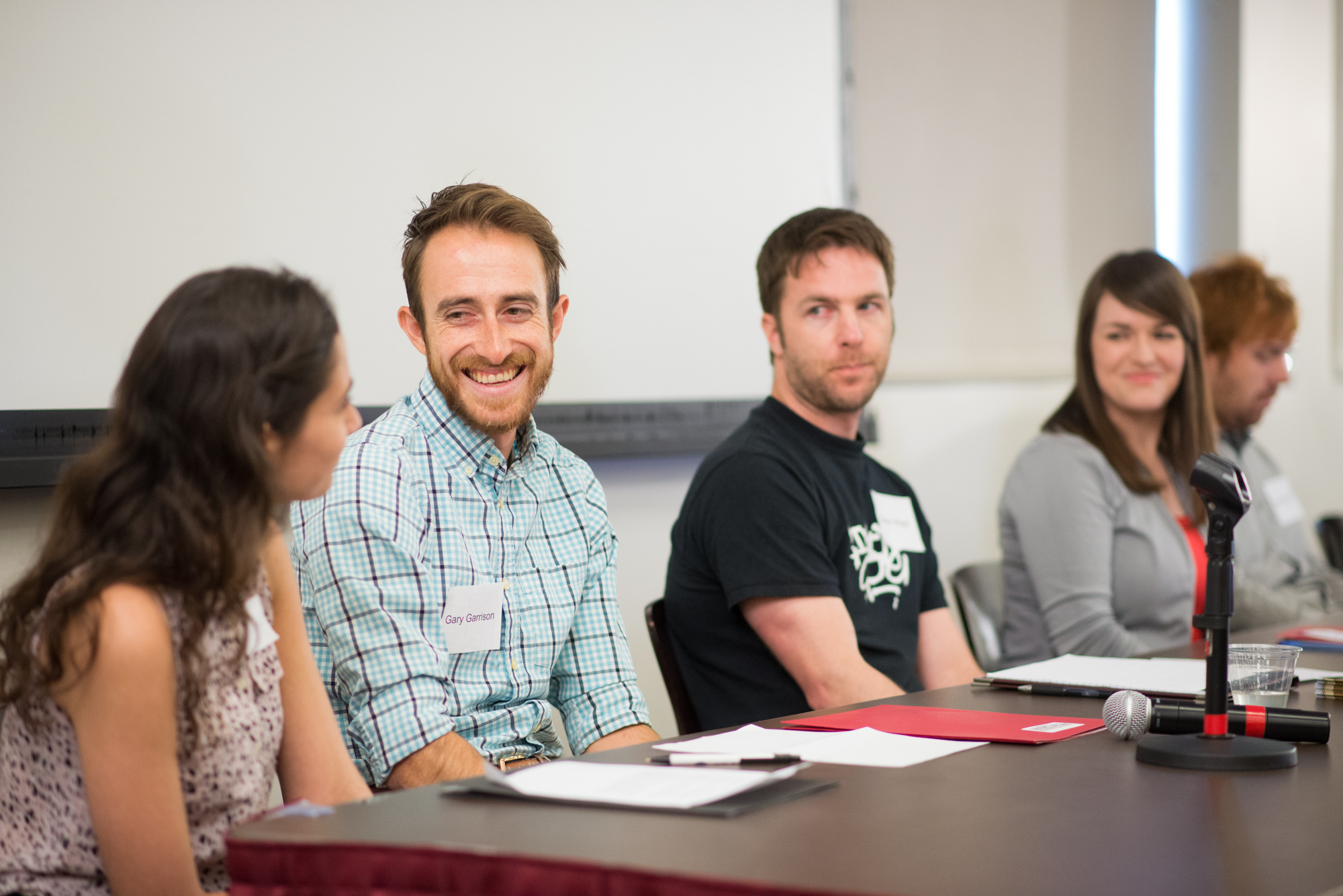The U.S. prison system is retreating from an era of force and punishment and is starting to think once again about education and rehabilitation programs.
And that’s not only good for society but good for the economy, according to a panel of experts who gathered at Arizona State University this weekend to discuss the role of prison education as part of the American landscape.
“Political positions on prison education shift like the wind, and we’re coming out of an incapacitation and punishment model and realizing again there’s a direct relationship between education and recidivism,” said Michelle Ribeiro, who recently retired as education director for the New Mexico Corrections Department.
“Not only does education help inmates when they release from prison back into society, but it’s also good for the economy and it saves taxpayers money.”
Ribeiro was one of several featured guests at the fifth annual Prison Education Conference, held March 19 at the Memorial Union on ASU’s Tempe campus. The event was hosted by ASU’s Department of English and the Prison Education Awareness Club, a nonpolitical student organization that is dedicated to raising awareness of the need for prisoner education programs.
The Great Recession had a profound impact on the budget of correctional institutes and nearly wiped out most educational programming, said Ribeiro, former education supervisor for the Penitentiary of New Mexico, 15 miles south of central Santa Fe.
“The budget to run my program in 2008 and 2009 was shrinking, and there was little money and few offerings for a high-quality education program,” Ribeiro said. “I was desperate, but it got me to brainstorming.”
Her desperation led to inspiration and ultimately the creation of the Pen Project — a writing class that allows maximum-security and other incarcerated writers to receive anonymous feedback from ASU student internsAfter being unable to find a New Mexico university that did prison outreach, Ribeiro reached out to the Virginia G. Piper Center for Creative Writing and made the ASU connection. in the Department of English.
Michelle Ribeiro, former education supervisor at the Penitentiary of New Mexico, gives a demonstration of the "thin black line," the figurative divide between prisoners and corrections staff, during the fifth annual Prison Education Conference on March 19 at the ASU Tempe campus. Top photo: Sheldon Thompson, a former inmate and Pen Project participant, reads some of his written work at the conference. Photos by Ben Moffat/ ASU Now
The program was created in 2010 and has mutual benefits for incarcerated writers and students. Interns employ the critical skills they have learned over the course of their undergraduate education in order to read and critically comment on fiction, poetry and non-fiction prose produced primarily by maximum-security inmates in New Mexico.
“Inmates are getting a lot of good feedback from our interns, who are delighted to share what they know,” said Cornelia “Corri” Wells, director of ASU’s Prisoner Education Programming and English lecturer. “Those who are incarcerated have created an awareness for our students that life is tough, and our students are also getting humbled because they’re learning the writers are full human beings and are not always the people that are labeled or portrayed by society.”
English literature major and Pen Project intern Katerina Morosoff admitted it took a while for her to be humbled, but she said she is now won over.
“My first semester I felt bad, like this heartless person because I just analyze things because that’s what I’ve been taught to do in school — interpret and analyze,” said Morosoff. “This second semester I started to realize how passionate some of these writers are about their work. Now that I’ve opened myself up, I’m less cold and their writing has really connected with me to the point where I reference a lot of what they say in my mind because they have wise words of advice. I really don’t know what effect I have on them, but I know they have a great effect on me.”
The impact of the Pen Project on former New Mexico inmate Sheldon Thompson has been life-changing. The 35-year-old Native American was recently awarded a writing scholarship to the Institute of American Indian Arts in Santa Fe and recited three of his writings to the crowd of approximately 100 people who attended the conference at ASU.
MFA student Gary Garrison (second from left) shares his experience teaching creative writing in state prisons March 19.
“It’s strange reading my work to you here today,” Thompson said with a slight smile. “I’m used to reading in front of a room full of men in orange jumpsuits.”
Twenty-two students now coach 90 inmates in New Mexico and 50 at the Arizona State Prison Complex in Florence, who are under lockdown 23 hours per day and have no access to regular education programming.
ASU recently added another program offered through the School of Criminology and Justice SystemThe School of Criminology and Justice System is part of ASU’s College of Public Service and Community Solutions. called the Inside-Out Prison Exchange Program. The class brings together college students and incarcerated individuals to learn about the issues of crime and justice over a full semester. The culmination of this community-based learning is an actionable project designed to improve the correctional system.
“You never know who’s going to be tomorrow's warden or correctional officer or which individual might affect policy and change,” said Kevin Wright, who teaches the class. “My research is based on recidivism, and these projects help.”
The Rand Corporation thinks along the same lines, and a landmark 2013 study called “Evaluating the Effectiveness of Correctional Education,” essentially stated:
• Correctional education improves inmates’ chances of not returning to prison.
• Inmates who participate in correctional education programs had 43 percent lower odds of recidivating than those who did not.
• Education programs improve inmates’ chances of obtaining employment after release. The odds of obtaining employment post-release among inmates who participated in correctional education was 13 percent higher than those who did not participate in correctional education.
• Providing correctional education can be cost-effective when it comes to reducing recidivism.
Officials from the Arizona Department of Corrections (ADOC), who presented at the conference, have embraced this notion and are aggressively applying for national and local grants to implement education and workforce programs as well as holding first-time job fairs in correctional institutions statewide.
“There’s a huge focus nationwide on re-entry and long-term recidivism,” said Nikki Studer, ADOC’s community corrections manager. “We don’t want inmates getting involved with the criminal justice system again.”
More Arts, humanities and education

ASU professor's project helps students learn complex topics
One of Arizona State University’s top professors is using her signature research project to improve how college students learn science, technology, engineering, math and medicine.Micki Chi, who is a…

Award-winning playwright shares her scriptwriting process with ASU students
Actions speak louder than words. That’s why award-winning playwright Y York is workshopping her latest play, "Becoming Awesome," with actors at Arizona State University this week. “I want…

Exceeding great expectations in downtown Mesa
Anyone visiting downtown Mesa over the past couple of years has a lot to rave about: The bevy of restaurants, unique local shops, entertainment venues and inviting spaces that beg for attention from…




